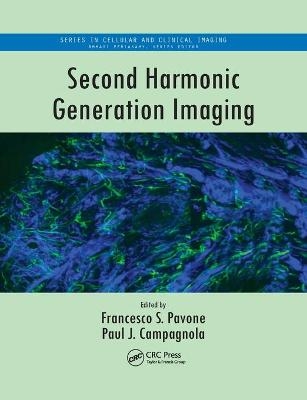
Second Harmonic Generation Imaging
CRC Press (Verlag)
978-0-367-37990-2 (ISBN)
Organized into three sections, the book:
Provides an introduction to the physics of the process, step-by-step instructions on how to build an SHG microscope, and comparisons with related imaging techniques
Gives an overview of the capabilities of SHG microscopy for imaging tissues and cells—including cell membranes, muscle, collagen in tissues, and microtubules in live cells—by summarizing experimental and analytical methods
Highlights representative biomedical and medical applications in imaging cancer, fibroses, autoimmune diseases, connective tissue disorders, eye pathologies, and cardiovascular disease
Historically, clinical imaging at the cellular and tissue level has been performed by pathologists on ex vivo biopsies removed by the surgeon. While histology remains the "gold standard" for pathologists, its interpretation remains highly subjective. Much of SHG research has focused on developing more quantitative, objective metrics. A tutorial for newcomers and an up-to-date review for experts, this book explores how SHG may be used to more precisely image a wide range of pathological conditions and diseases.
Francesco S. Pavone is currently a full professor at the University of Florence in the Department of Physics and at the European Laboratory for Non-Linear Spectroscopy (LENS), and group leader at the Biophotonics Laboratories. His research group is involved in developing new microscopy techniques for high-resolution and high-sensitivity imaging, and laser manipulation purposes. He is also engaged in tissue imaging research. He is the author of more than 100 peer-reviewed journal articles, has delivered more than 60 invited talks, and is on the editorial board of several journals. He coordinates various European projects and has organized several international congresses. Paul J. Campagnola is an associate professor in the Departments of Biomedical Engineering and Physics at the University of Wisconsin—Madison. His research focuses on the development of nonlinear optical spectroscopy and microscopy methods, with an emphasis on translational applications. These research efforts are directed at understanding cancer cell–ECM interactions in the tumor microenvironment as well as fabricating scaffolds for tissue regeneration. He has published more than 50 peer-reviewed journal articles and several review articles and book chapters, and has delivered more than 70 invited talks. He serves on the editorial board for the Journal of Biomedical Optics and on numerous NIH and NSF review panels.
Principles of SHG Imaging: Theoretical Framework for SHG Microscopy: A Matrix-Based Approach. How to Build an SHG Apparatus. THG Microscopy of Cells and Tissues: Contrast Mechanisms and Applications. SHG Microscopy and Its Comparison with THG, CARS, and Multiphoton Excited Fluorescence Imaging. Biomedical Imaging Using SHG: Molecular Structure and Order with Second-Harmonic Generation Microscopy. 3D SHG Imaging and Analysis of Fibrillar Collagen Organization. Second-Harmonic Generation Imaging of Microtubules. SHG and Optical Clearing. Holographic SHG Imaging. Imaging Membrane Potential with SHG. Applications of SHG: Second-Harmonic Generation Imaging of Self-Assembled Collagen Gels. SHG and Multiphoton Fluorescence Imaging of the Eye. Multiphoton Excitation Imaging of the Arterial Vascular Bed. Combined SHG/THG Imaging. SHG Imaging of Collagen and Application to Fibrosis Quantization. Quantitative Approaches for Studying the Role of Collagen in Breast Cancer Invasion and Progression. SHG in Tumors: Scattering and Polarization. SHG Imaging for Tissue Engineering Applications. Index.
| Erscheinungsdatum | 01.10.2019 |
|---|---|
| Verlagsort | London |
| Sprache | englisch |
| Maße | 178 x 254 mm |
| Gewicht | 453 g |
| Themenwelt | Medizin / Pharmazie ► Physiotherapie / Ergotherapie ► Orthopädie |
| Naturwissenschaften ► Biologie | |
| Naturwissenschaften ► Physik / Astronomie ► Angewandte Physik | |
| Technik ► Elektrotechnik / Energietechnik | |
| Technik ► Medizintechnik | |
| Technik ► Umwelttechnik / Biotechnologie | |
| ISBN-10 | 0-367-37990-2 / 0367379902 |
| ISBN-13 | 978-0-367-37990-2 / 9780367379902 |
| Zustand | Neuware |
| Haben Sie eine Frage zum Produkt? |
aus dem Bereich


